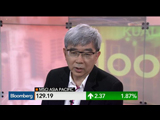This is a very brief introduction to the very vast subject of fundamental analysis. Subscribers of i Capital® are encouraged to undertake more research of their own to fully benefit from this important topic. To understand and make productive use of fundamental analysis, familiarity with accountancy and economics are essential. However, one need not be an accounting or economics expert for this purpose.
From a shorter - term perspective, one could argue that fundamental analysis does not apply to the Kuala Lumpur Stock Exchange (KLSE). From a longer - term perspective, however, it is very difficult to invest successfully even on the KLSE without incorporating fundamental analysis into one's methodology. While the general perception is that the KLSE is still an inefficient market where rumours, tips, poor corporate governance, etc. rule, the smart investor would realise that applying sound fundamental analysis in such a stock market can be rewarding. But just like any other investment methods, fundamental analysis has its strength and weakness.
The Formula for calculating net EPS is :
Net Attributable Profit divided by Number of Shares Outstanding
EPS is generally used as an indicator of the performance of a company over a long period of time. For example, while a company's earnings may be rising over a period of time, its EPS may not be. There are various ways in calculating a company's EPS, depending on what the objective of the investor or analyst is. Most use net attributable earnings, that is, earnings after tax and minority interests.
EPS can also be based on historical or prospective earnings. Projected EPS is important because it can significantly influence the company's share price. A company's EPS can also be calculated on a diluted or non-diluted basis. Where a company has warrants outstanding, it is common practice to calculate the EPS assuming that all the warrants are exercised. The number of shares outstanding may also be affected by rights and bonus issues. In such cases, the number of shares outstanding could be an average figure.
PE Ratio is a useful tool for valuing companies, that is, it establishes a quantitative relationship between the share price and earnings of a company. It shows how much one is paying relative to its earnings. PE ratio can be used for the same company over a period of time or it can be used to compare 2 or more companies at the same period of time.
The formula for PE ratio is :
Current market price divided by earnings per share.
There are generally 2 types of PE ratio calculated :
- Historical PE ratio is based on past EPS.
- Prospective PE ratio is based on future or forecasted EPS.
For example, when we say that the 2001 PROSPECTIVE PE ratio for company XYZ is 17 times, this refers to the present market price of Company XYZ but based on its forecasted EPS for 2001. If we use the 1999 EPS, then we are referring to the HISTORICAL PE ratio.
The formula for Dividend Yield is :
Dividend per share divided by Market price per share
It is always expressed in percentage terms. Dividend yield is often used to compare with the interest derived from fixed deposits or other investment alternatives. This will help us evaluate which investment alternative gives a better return. In making such comparisons, one needs to decide whether it is more relevant to use net or gross dividends. Just like calculating a PE ratio, the dividend per share can be on a historical or prospective basis.
The formula is :
Total Shareholders' fund divided by number of shares outstanding
Book value is a crude measure of the net worth of a company. As an accounting measurement, this may be the approximate liquidation value of the company should it be liquidated. A more precise measurement would include the current market value of the company's assets.
The formula is :
Net profit divided by total shareholder's funds
It is used to measure the rate of return on the shareholders' investments. For example, if a company's net ROE is 20%, this indicates that for every $1.00 invested by the shareholders, the company is generating 20 cents in return. Some analysts think that analyzing Net ROE is more useful than using PE ratio. However, a company with high borrowings may be able to generate an impressive Net ROE. The shareholders funds may also be affected by rights issues and or mergers and acquisitions. In such cases, the total shareholders funds could be an average figure.
The formula is
Net profit divided by total assets
It is useful as an indicator of the ability of the management in using the company's assets to generate income. Related to this useful indicator is Return on Capital Employed ( ROCE ), probably the most important indicator in assessing the quality of a company's management. The underlying concept behind ROC is similar to ROA.
Using an indicator in isolation can be misleading. In analysing an Internet company, for example, calculating its book value is rather meaningless. As with technical analysis, a ratio or indicator must be used with other indicators to give a more complete picture. Putting them all together is necessary and needs experience and judgement.
The above is only a very short brief. Subscribers who want to pursue it further, something that i Capital® very strongly recommends, can find plenty of books in most bookshops.





